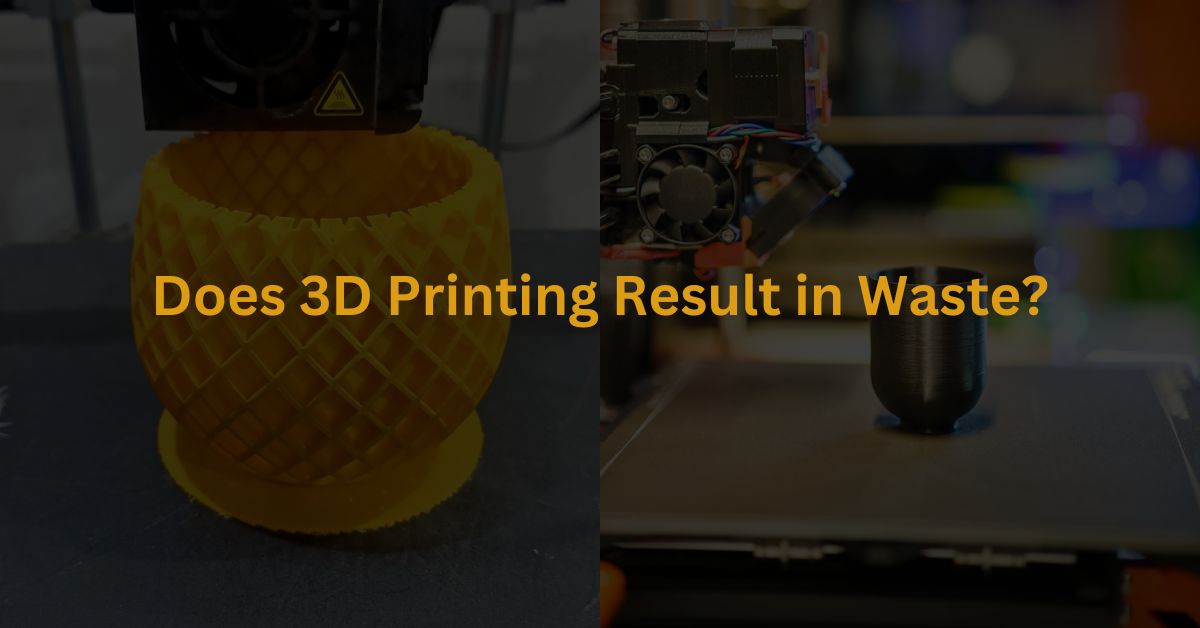Does 3d printing result in waste? 3d printing has become popular for making everything from small toys to complex machine parts but it also creates waste like failed prints, wrong designs, defective prints etc.
Waste in 3D Printing
When we think about waste in manufacturing, we often imagine leftover raw material that is thrown away. In traditional manufacturing methods, like cutting or molding, a lot of material is often removed and discarded. This can lead to significant waste. However, 3d printing is different.
In 3D printing, the process is additive, meaning that material is only used where it is needed to build the object. Because of this, the amount of waste generated is usually much less compared to traditional methods. But, this doesn’t mean there is no waste at all.
Types of Waste in 3D Printing
There are a few types of waste that can be associated with 3D printing:
- Support Structures: Some 3D printed objects require support structures to be built along with the main object. These supports help the object maintain its shape during printing but are not part of the final product. After printing, these supports are removed and often thrown away.
- Failed Prints: Sometimes, 3D prints don’t turn out as expected due to errors, such as incorrect settings, filament jams, or power outages. These failed prints can’t be used and often become waste.
- Unused Filament: If you don’t use the entire spool of filament, the leftover material might be too small to be used for another project. This leftover filament could be considered waste.
Reducing Waste in 3D Printing
Waste in 3d printing can be reduced by following these points below:
- Recycle Filament: Some companies offer machines that can recycle old prints or unused filament into new filament. This way, you can reuse materials instead of throwing them away.
- Optimize Designs: By carefully designing the object and reducing the need for support structures, you can minimize the amount of waste produced.
- Plan Carefully: Before starting a print, double-check the settings and make sure everything is correct. This can help prevent failed prints, which reduces waste.
What to Do with 3D Printing Waste
3D printing is a great technology, but it can produce a lot of waste. This waste includes failed prints, leftover materials, and supports. Instead of throwing it away, there are several things you can do to manage 3D printing waste responsibly.
- Recycle the Waste: Many types of 3D printing materials, like PLA and ABS, can be recycled. Some companies and local recycling centers accept 3D printing waste. You can also buy a filament recycler that turns old prints into new filament.
- Reuse Leftover Filament: Small pieces of leftover filament can still be used for smaller prints. You can also combine different colors or types of filament to create new, unique prints.
- Create Useful Items: Instead of throwing away failed prints or extra material, use them to create small, useful items. For example, you can print keychains, clips, or even toys from the leftover filament.
- Donate Your Waste: Some schools, makerspaces, or hobbyists might accept your 3D printing waste like prints with minor defects for their projects. This way, your waste can help others learn and create.
- Compost PLA Waste: PLA is a biodegradable material. If you have a compost bin, you can break down small PLA pieces and add them to the compost. However, this only works for pure PLA, not PLA mixed with other materials.
By recycling, reusing, and finding creative ways to repurpose 3D printing waste, you can help reduce the environmental impact of 3D printing.
Conclusion
While 3d printing does create some waste, it generally produces much less than traditional manufacturing methods. By recycling filament, optimizing designs, and planning carefully, the waste can be further reduced. In the future, as technology continues to improve, we can expect even less waste from 3D printing.
Defects in FDM 3D Printing
